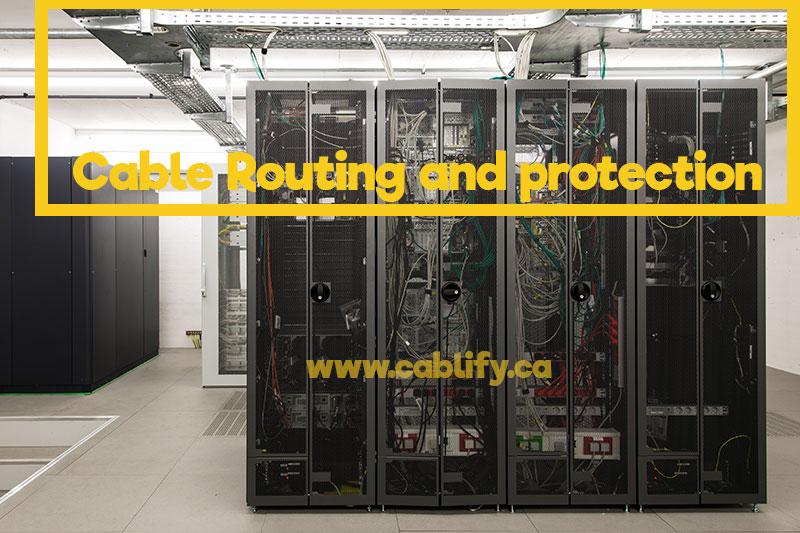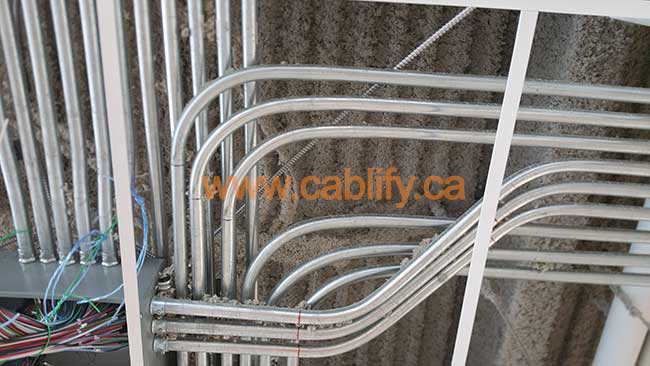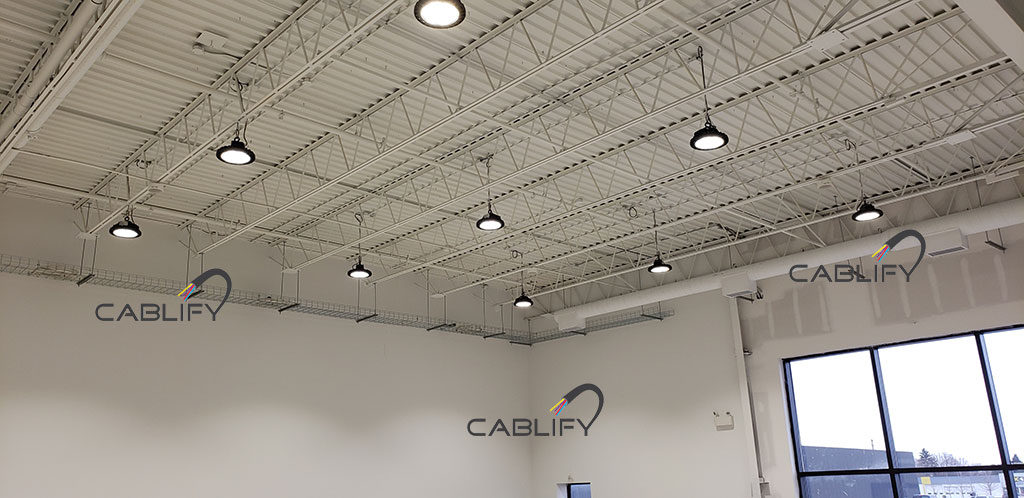Cablify technicians are experts in IT Cable management services including Cable routing and protection services using high-tech professional grade equipments. Cable routing plays an important role in the implementation and deployment of Structured Cabling. Here are some of the important Cable routing and protection products and services that we offer.
Installation of Cable Conduits:
- Flexible Steel Conduit
- Flexible Raceways
- Liquid-Tight Metallic UA Conduit
- EMT Conduit Installation
Cable Trays
- Solid PVC Cable Routing Systems
- Basket-Style Cable Trays
- Snake Trays
Cable Raceways:

Conduit helps protect your Wiring from external damage such as extreme weather, dust, electrical interference and other external exposures. We supply and install all types of Network Cabling Conduits and trays to keep your wiring safe. We use and supply only the highest quality of Conduits which are guaranteed for both damage and installation.
Our installers are certified and experienced in installing Conduits in all kinds of environments, including plants, offices, schools, colleges, and even sterile environments. Check out Conduit Fill Table for Cat6
Cabling trays Installations
We also supply and install all types of cabling trays. Cabling trays are installed to route the cables and can use as an alternative to the conduit. These trays are typically wire trays that are designed to support the weight of cables ideal for long horizontal runs. Cable trays make it run and install the cables and at the same time very accessible when it comes to maintenance and troubleshooting.
Conduit installation

Conduit installation

EMT Installation terminology & Guide
When installing EMT conduit, it is important to be familiar with the terminology and conduits required for the job. Here are some terms and conduits that are commonly used:
- EMT Conduit: EMT stands for Electrical Metallic Tubing. It is a type of metal tubing that is used to protect electrical wiring.
- Conduit Bender: A conduit bender is a tool used to bend EMT conduit to a specific angle.
- Connectors: Connectors are used to join two pieces of EMT conduit together.
- Couplings: Couplings are used to join two pieces of EMT conduit together end-to-end.
- Elbows: Elbows are used to change the direction of EMT conduit. They come in different angles, such as 45 degrees and 90 degrees.
- Conduit Straps: Conduit straps are used to secure EMT conduit to a surface, such as a wall or ceiling.
- Conduit Hangers: Conduit hangers are used to suspend EMT conduit from a ceiling or other overhead structure.
- Conduit Bodies: Conduit bodies are used to change the direction of EMT conduit. They come in different shapes, such as L-shaped and T-shaped.
- Bushings: Bushings are used to protect the wires inside EMT conduit from damage caused by sharp edges.
- Pull Boxes: Pull boxes are used to provide access to EMT conduit for pulling wires through.
- Conduit Fill: Conduit fill refers to the amount of wires that can be safely run through EMT conduit based on its size and the size of the wires.
- Grounding: Grounding refers to the process of connecting EMT conduit to a ground wire in order to protect against electrical shocks.
Overall, it is important to have a good understanding of these terms and conduits when working with EMT conduits customers. This will help ensure that the installation is done correctly and safely.


